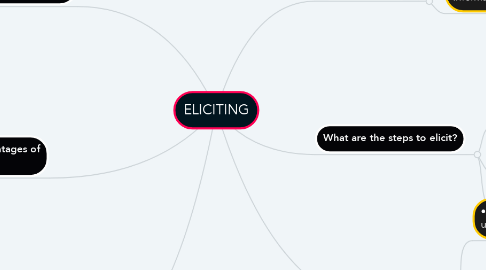ELICITING
af Selene Cordero


1. What are the advantages of eliciting?
1.1. •Getting the students involved in the context and bringing relevant information to the front of their minds.
1.2. •Eliciting helps you realise if the students are listening and understanding or not.
1.3. •keeps the students alert
2. What are the disadvantages of eliciting?
2.1. •Eliciting can get boring or repetitive.
2.2. •Can seem childish/ patronizing.
2.3. •Can be culturally inappropriate.
2.4. •Eliciting can be time consuming.
3. What are some advices when eliciting?
3.1. •Give enough information.
3.2. •Give very clear feedback on each student utterance.
3.3. • Use eliciting regularly as a basic technique in most lessons for keeping your class active and involved.
4. What is elicitingt?
4.1. A variety of techniques that allow the teacher to have students provide information instead of giving it to them.
5. What are the steps to elicit?
5.1. • Convey a clear idea to the students, perhaps by using pictures, gestures or questions, etc.
5.2. • They them supply the appropriate language, information or ideas.
5.3. • Give them feedback.
6. Example
6.1. • Often, the teacher provides stimulus using visuals or the board.
6.1.1. • This Mr and Mrs Roberts. They are newly married. They are looking at house for sale. It’s not in good condition… You might approach the task of building up the context something like this: T: Right. Now, do you remember Mr and Mrs Roberts? S3: Yes, last lesson. They married. T: Married? Is that right? S3: They got married.
